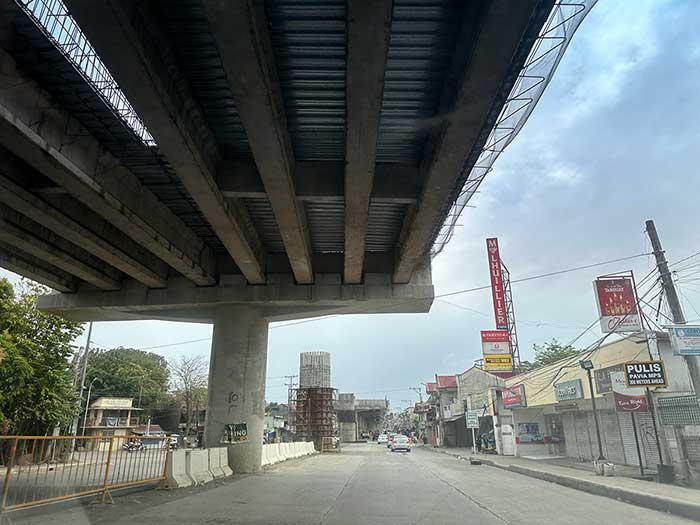
By Rjay Zuriaga Castor
The disparate results of soil tests between the Department of Public Works and Highways-Western Visayas (DPWH-6) and the United Technology Consolidated Partnership (UTCP) have snagged the progress of the P802-million Aganan flyover in Pavia, Iloilo.
DPWH-6 director Sanny Boy Oropel told Daily Guardian that the soil testing conducted by UTCP, the consultant commissioned by DPWH’s Bureau of Design, indicated that the depth of the pillars for the Aganan flyover was only 24 meters.
This data contrasts sharply with a later confirmatory and seismic test by the DPWH-6, which suggested a necessary depth of 54 meters to reach stable soil.
“Due to our experience with the Ungka flyover, we conducted a confirmatory test and a seismic test to determine once and for all the soil classification underneath because we are very concerned about the Aganan,” said Oropel.
UTCP is the same geotechnical consultancy firm commissioned to design the P680-million “sinking” Ungka flyover, which is currently undergoing rectification works estimated at P200 million after vertical displacements were recorded in the superstructure.
Oropel said that while they haven’t recorded any structural movements in the area, since the Aganan flyover shares the same alignment with the Ungka flyover, it might face a similar fate if not thoroughly checked.
“If we base it on our confirmatory and seismic test, the Aganan flyover should have the same depth of foundation as the Ungka flyover,” he added.
The two flyovers were undertaken by the International Builders Corp and were funded through former Senator Franklin Drilon.
With the disparate results from the tests conducted by the two entities, Oropel suggested the intervention of a third-party consultant.
“Since we (DPWH-6) are asserting that their depth is much shallower and UTCP claims theirs is correct, we might as well call for a third-party consultant to give their opinion on who is telling the truth,” he said.
“What we want is to ensure everything. Our experience with the Ungka flyover may happen again with the Aganan flyover,” he added.
It can be recalled that the Ungka flyover’s third party consultant Abinales Associates Engineers + Consultants said the design of the structure was inadequate, particularly the depths of the foundations or piers to ensure stability.
The DPWH-6 director said aside from confirming the appropriate depth of the pillars for the Aganan flyover, recommendations from the third party consultant will help the agency decide on what structural intervention will also be employed to the laggard progress in the flyover’s construction.
‘Tone-deaf’ UTCP
DPWH-6 also expressed frustration with UTCP’s lack of response to their requests for updates on the redesign for the Aganan flyover.
“If we’re talking about informing them, we have exhausted all our means of informing them, but it seems they are tone-deaf to it,” Oropel said.
The initial plan by UTCP for the Aganan flyover, which spans 436.90 meters including approaches, was to use concrete girders for the flyover’s 50-meter span intersection area.
However, former DPWH-6 director Engr. Nerie Bueño proposed a reevaluation of the design, suggesting the use of steel girders following the closure of the Ungka flyover due to questions about its structural integrity.
Construction works at the Aganan flyover were temporarily suspended in December 2022. As of the suspension date, it was around 70 percent complete.
DPWH-6 said they are still waiting for the P15-million budget requested for the third-party consultant to be released.



























